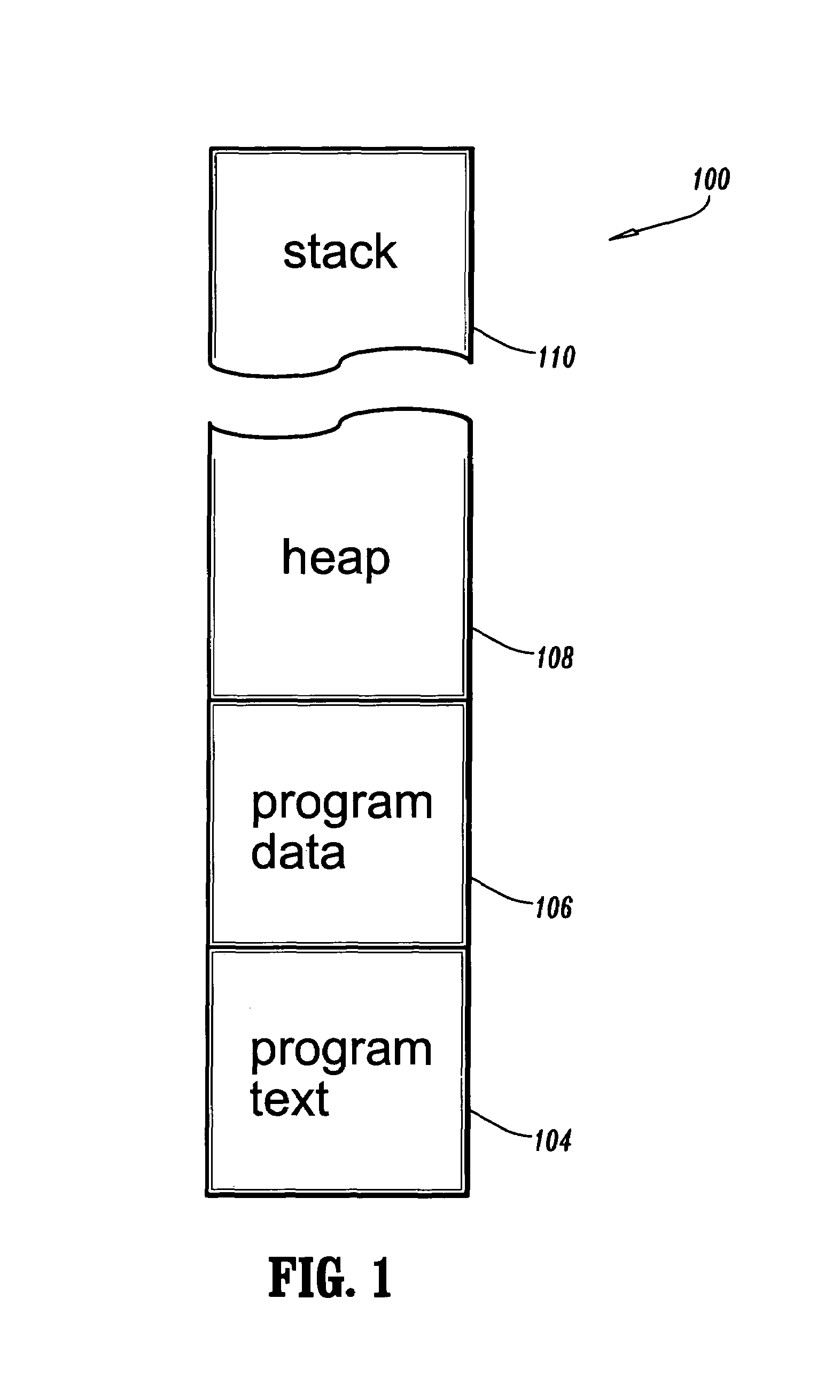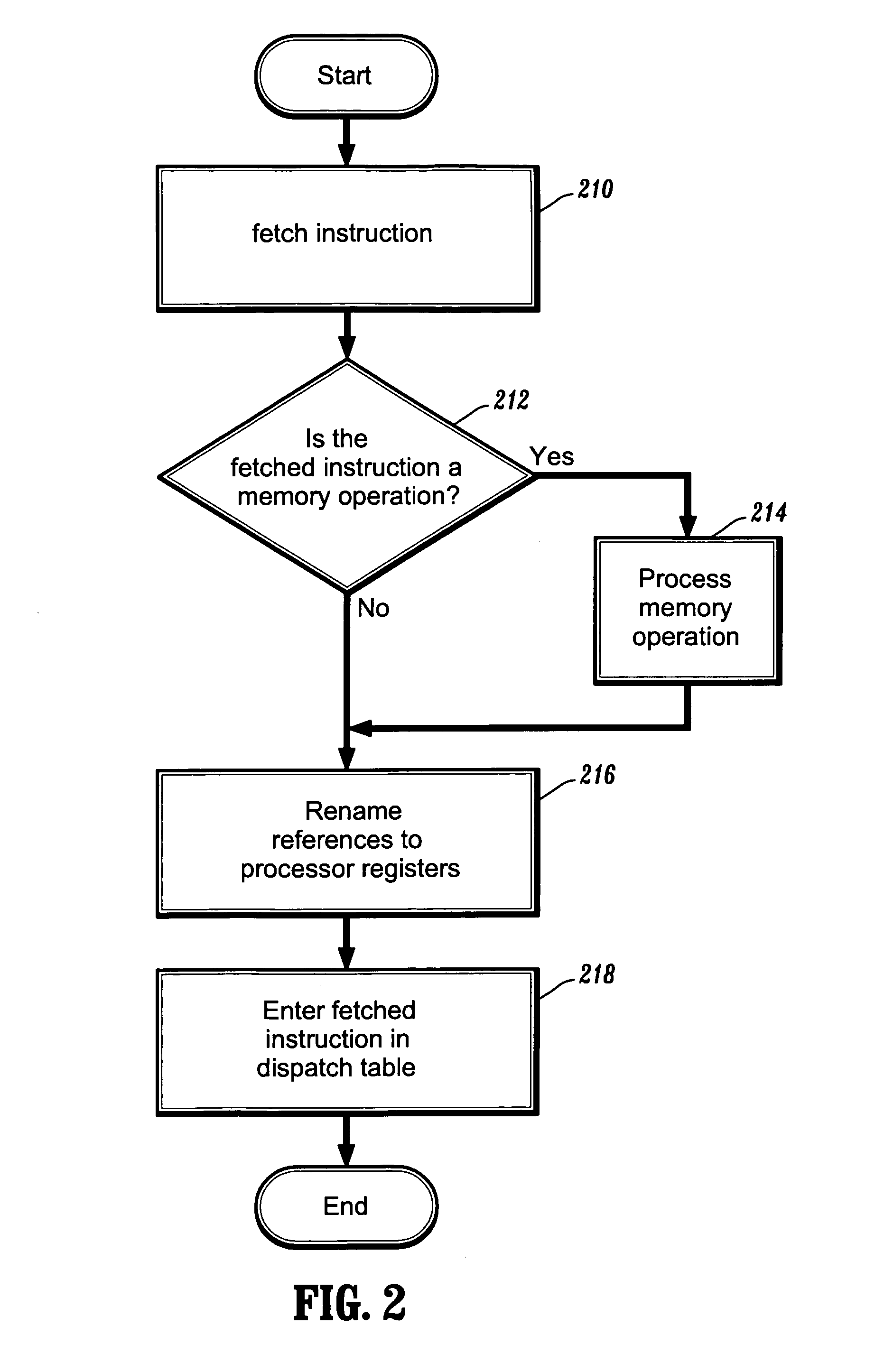Methods for renaming stack references to processor registers
a processor register and stack reference technology, applied in the field of computer processing systems, can solve the problems of slowing down achievable processor performance, affecting the degree of reordering that can be performed, and memory access incurs a number of costs
- Summary
- Abstract
- Description
- Claims
- Application Information
AI Technical Summary
Benefits of technology
Problems solved by technology
Method used
Image
Examples
Embodiment Construction
[0047]The present invention is directed to methods for renaming stack references in a computer processing system. According to the invention, the stack references are renamed to processor-internal registers. By concentrating on the frequent rename opportunities for stack references, the renaming architecture can be more efficiently implemented than prior art approaches to renaming memory references.
[0048]Such efficiency is derived from two aspects. With respect to the first aspect, the names are easier to determine, since references to the processor stack use a limited number of addressing registers such as the stack and frame pointers. This reduces the possible ambiguities that can arise in the renaming of memory locations using different general purpose registers. While accesses using other registers are possible, they are sufficiently infrequent to be handled using simple disambiguation techniques.
[0049]With respect to the second aspect, the need to perform consistency-preserving...
PUM
 Login to View More
Login to View More Abstract
Description
Claims
Application Information
 Login to View More
Login to View More - R&D
- Intellectual Property
- Life Sciences
- Materials
- Tech Scout
- Unparalleled Data Quality
- Higher Quality Content
- 60% Fewer Hallucinations
Browse by: Latest US Patents, China's latest patents, Technical Efficacy Thesaurus, Application Domain, Technology Topic, Popular Technical Reports.
© 2025 PatSnap. All rights reserved.Legal|Privacy policy|Modern Slavery Act Transparency Statement|Sitemap|About US| Contact US: help@patsnap.com



